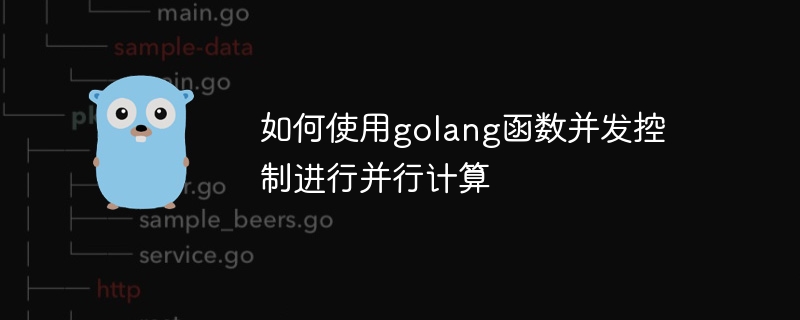Home >Backend Development >Golang >How to use golang function concurrency control for parallel computing
How to use golang function concurrency control for parallel computing
- 王林Original
- 2024-04-24 14:03:011271browse
In Go, you can use goroutine and function concurrency control to implement parallel computing. The specific steps are as follows: Create a goroutine and use the go keyword to create a lightweight concurrent execution unit. Use the sync.WaitGroup type to manage goroutines and coordinate parallel execution. Break the task into parts and use goroutines to execute the parts in parallel.

How to use Go’s function concurrency control for parallel computing
Parallel computing is a technology that allows a program to run at the same time Execute code on multiple processors or cores, improving performance and efficiency. In the Go language, parallel computing can be achieved through goroutine and function concurrency control.
Goroutine
Goroutine is a lightweight concurrent execution unit in Go. They are very similar to threads, but more lightweight and efficient. You can use the go keyword to create a goroutine:
go func() {
// 并发执行的代码
}Function concurrency control
Function concurrency control is a way to use goroutine to execute multiple functions in parallel Technology. This can be achieved by using the sync.WaitGroup type:
import (
"sync"
)
var wg sync.WaitGroupPractical Example
Consider a calculation of the 100-number Fibonacci sequence program. We can use function concurrency control to split this task into multiple parts and execute them in parallel:
func fib(n int) int {
if n < 2 {
return n
}
return fib(n-1) + fib(n-2)
}
func main() {
var results []int
n := 100
wg.Add(n)
for i := 0; i < n; i++ {
go func(i int) {
results[i] = fib(i)
wg.Done()
}(i)
}
wg.Wait()
fmt.Println(results)
}In this example, the fib function calculates the Fibonacci sequence, The main function creates 100 goroutines to calculate Fibonacci numbers in parallel, and uses WaitGroup to wait for all goroutines to complete before printing the results.
The above is the detailed content of How to use golang function concurrency control for parallel computing. For more information, please follow other related articles on the PHP Chinese website!
Related articles
See more- Golang language features revealed: parallel computing and concurrency model
- Concurrency control strategy and performance optimization techniques of http.Transport in Go language
- How to use parallel computing to speed up the running of Python programs
- Golang Development: Best Practices for Implementing Parallel Computing

